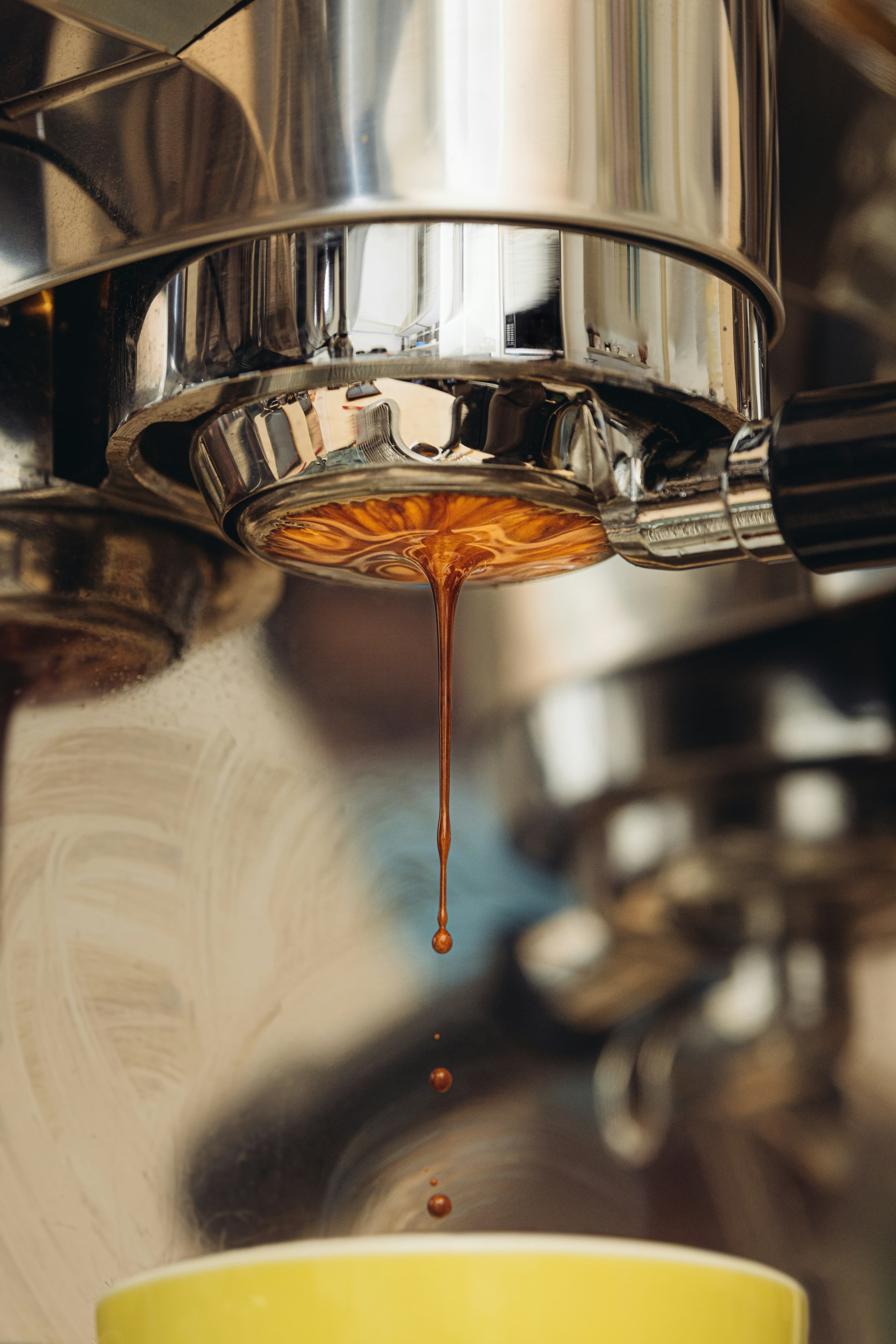The Starter Guide to Espresso

Espresso isn’t just a brew method—it’s the foundation of modern coffee culture. In a single, concentrated shot, espresso captures everything that makes coffee compelling: bold flavor, rich aroma, deep body, and a lingering finish. It’s the base for countless drinks—cappuccinos, lattes, flat whites, macchiatos—but when pulled well, a standalone espresso needs no company. What sets it apart is the way it’s brewed: pressurized water pushed through a puck of finely ground coffee at high temperature, extracting complex flavors in under 30 seconds.
Precision matters here. The grind has to be dialed in just right—too coarse and the shot will be weak and watery; too fine and it’ll choke the machine. Timing, temperature, dose, and pressure all play tightly choreographed roles. The result, when it all clicks, is thick and syrupy, topped with a golden layer of crema that floats like foam on a perfect pint. It’s not the most forgiving method, but that’s part of the appeal. Brewing espresso becomes part craft, part science, and part ritual.
Espresso’s origins are deeply rooted in the fast-paced energy of early 20th-century Italy. In the late 1800s, coffee was a slow process, brewed in large pots and served in cafes where customers lingered for hours. But with the rise of industrial cities, time became a luxury. In 1901, Italian inventor Luigi Bezzera developed the first machine that used steam pressure to brew coffee more quickly—literally “espress,” meaning “pressed out” or “express.” Bezzera’s invention was refined and commercialized by Desiderio Pavoni, whose machines began appearing in Milanese cafes, introducing Italians to a quicker, more intense form of coffee. Over the following decades, improvements like piston levers and electric pumps allowed for greater consistency and control. The 1960s brought the pump-driven machines we still use today. What started as a functional response to modern life evolved into a symbol of craftsmanship, community, and daily ritual. Espresso became not just a way to drink coffee—but a way to live it.
Espresso techniques, tricks and methods are highly debated. This guide will lay out the basic methods for brewing espresso. Since espresso is so complex, we'll offer a longer series diving into the unique traits of pulling a shot.
Equipment needed for making espresso:
Espresso Machine - manual, semi-automatic, or automatic
Burr Grinder - capable of fine espresso grind, you can also buy pre-ground espresso from your local cafe
Tamper - critical for getting a compacted puck
Scale - for measuring beans and espresso shot output
Timer - or machine with shot timer
Espresso Cups - or your favorite coffee cup
How to Brew Espresso (Step-by-Step, for Home Machines). As a reminder, this is a basic guide for those getting started:
Grind the coffee – Use a burr grinder to achieve a fine grind, like powdered sugar or table salt. For a double shot, dose about 18–20g of coffee.
Distribute and tamp – Evenly distribute the grounds in the portafilter and tamp firmly with consistent pressure to create a flat, compact puck.
Lock and brew – Insert the portafilter into the group head and start your shot. Brew time should fall between 25–30 seconds for a double shot, with a yield of 36–40g.
Watch the flow – A good shot should start slow, thicken into a golden stream, and finish with a stable crema. If it gushes too fast or barely drips, adjust your grind.
Serve immediately – Espresso is best enjoyed fresh. Drink it as is, or use it as the base for your favorite milk drinks.
It's nearly a guarantee that you won't get your shot dialed on your first try, so you'll need to make a few to get the grind size, time and volume just right. The internet is littered with ways to do this, but let me boil it down to the basic principles.
Adjust the Grind Size: Grind size is one of the most powerful tools you have. A finer grind slows down extraction, often resulting in a more intense, syrupy shot—but go too fine and you’ll over-extract, causing bitterness. A coarser grind speeds things up, which can reduce bitterness but also lead to a thin or sour shot if under-extracted. Small changes here make a big difference.
Tweak the Dose (Amount of coffee in your portafilter): Try increasing or decreasing the amount of coffee in your portafilter. A higher dose (e.g. 20g instead of 18g) can produce a stronger, richer shot, while a slightly lower dose can make the shot taste cleaner or brighter. Just be sure your basket can handle the volume without overflowing or choking the machine.
Control the Brew Time: If your shot is pulling too fast (under 25 seconds), it may taste sour or flat—try a finer grind or firmer tamp. If it’s dragging past 35 seconds, you may get over-extracted, bitter notes—coarsen the grind or reduce the dose. A typical double shot should take around 25–30 seconds, but adjusting this window slightly helps balance sweetness, body, and acidity. If your shot pours too fast, make your grind size smaller. Conversely, if it pours too slowly make your grind size coarser. This is something you'll need to experiment with.
Espresso is unforgiving, but rewarding. It demands attention, repetition, and a willingness to tinker—but once you dial it in, there’s nothing quite like it. From morning jolts to afternoon rituals, it’s the brew that turns coffee into a craft. Stay tuned for future articles as we dive into more advanced methods and new ways espresso is changing.